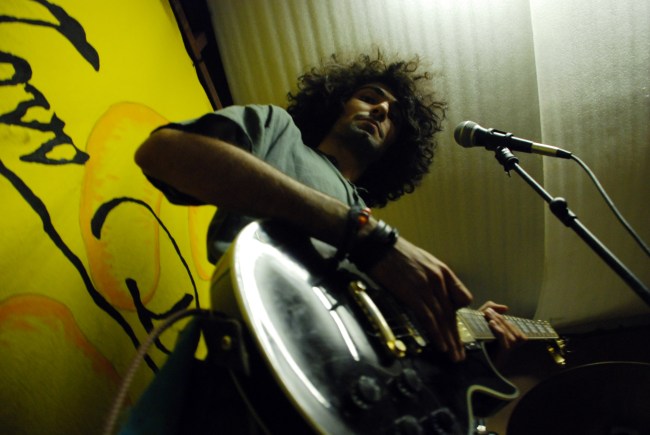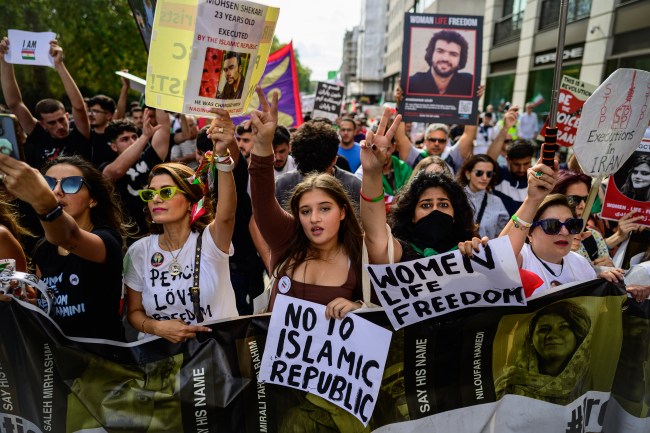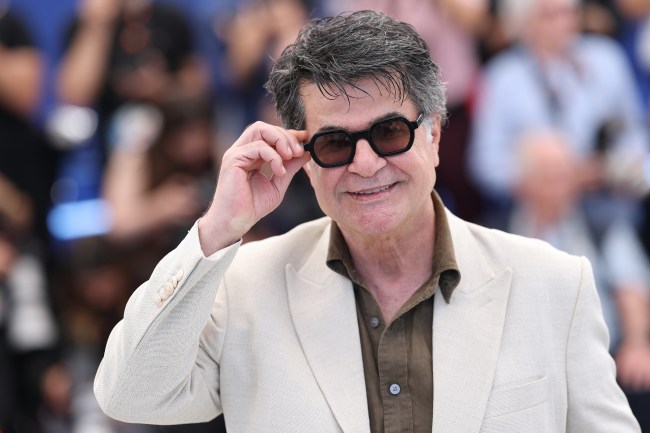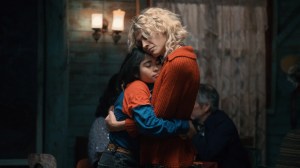With the rise of avant-garde filmmakers in the 1960s, Iran‘s New Wave emerged, marked by the works of pioneers like Ebrahim Golestan, Farrokh Ghaffari, Hajir Darioush, and Forough Farrokhzad.
Later, in the late 1960s and early 1970s, the cinematic contributions of Dariush Mehrjui, Sohrab Shahid-Saless, Arby Ovanessian, and Nasser Taghvai breathed new life into Iranian cinema. These filmmakers rejected the commercial, formulaic productions of the mainstream industry, instead embracing a more authentic portrayal of social realities.
At a time when Iran was on the brink of revolution and political tensions were high, the New Wave stood in stark contrast to the escapist, dreamlike narratives of studio films, which were often inspired by Indian, Turkish, and Egyptian cinema, paying little attention to the country’s sociopolitical landscape. Key to the New Wave were two elements: modernist narrative structures influenced by European cinema and a focus on social issues, informed by socialist realism and leftist ideologies. However, after the Islamic Revolution, filmmakers faced severe censorship under the new regime. Many were silenced or forced to adapt, and the dissonance between their films and the regime’s imposed social realities became increasingly evident. Filmmakers navigated these restrictions, shaping their works within the constraints of both content and symbolism.
Unveiling the Veil: The Rise of a Post-Hijab Aesthetic
In post-revolutionary Iran, especially throughout the 1980s, cinema became subject to intense ideological scrutiny. Revolutionary fervor and strict moral codes reshaped film, censoring depictions of gender, modern lifestyles, and social realities. Women, in particular, were transformed from complex individuals into symbolic figures — stripped of autonomy and reduced to mothers, wives, or veiled shadows. Their physical presence was erased under the ever-present hijab, even in the most intimate domestic scenes. Love, desire, and bodily expression were banished from the screen, replaced by rigid portrayals of the “Islamic-Revolutionary Woman.”
This cultural suppression continued for decades, as political unrest escalated and the state’s grip on artistic expression tightened. State-endorsed films were rewarded with visibility and resources, while critical and independent voices were systematically silenced. The Fajr Film Festival, once a national cinematic platform, evolved into a mouthpiece for the regime. Yet outside this framework, sparks of resistance began to form.
By the early 2000s, digital technology allowed filmmakers to bypass institutional control. Works like 2025 Cannes Palme d’Or contender Jafar Panahi’s “The Circle” and Granaz Moussavi’s “My Tehran for Sale” marked the early emergence of Iran’s underground cinema — films made without permits, openly confronting gender-based oppression, surveillance, and censorship. Bahman Ghobadi’s “No One Knows About Persian Cats” followed soon after, capturing the realities of Iran’s censored underground music scene and the threat of exile faced by artists.
 ‘No One Knows About Persian Cats’©IFC Films/Courtesy Everett Collection
‘No One Knows About Persian Cats’©IFC Films/Courtesy Everett Collection
While the first Iranian New Wave of the 1960s and ’70s moved away from escapist studio films toward social realism, the second wave — underground cinema — pushed even further, rejecting the ideological filters imposed by the state. These films sought to portray life in Iran unmediated, raw, and often dangerously close to the truth. By 2021, this movement had grown significantly, with notable contributions from filmmakers like Samira Makhmalbaf and Nader Saeivar.
The real turning point, however, came in 2022 with the Mahsa Amini protests. The slogan “Woman, Life, Freedom” catalyzed not only mass demonstrations but a cultural awakening. Filmmakers, inspired by the uprising, began creating without hijab, without state approval, and often in complete secrecy. That year alone, over 70 underground Iranian films were submitted to Cannes, signaling a bold, irreversible shift in Iran’s cinematic identity.
Among the most significant works from this era is “Critical Zone” by Ali Ahmadzadeh, a nightmarish portrait of a society in collapse. It won the top prize at the Locarno Film Festival. “Terrestrial Verses” by Ali Asgari and Alireza Khatami, screened at Cannes, examined the impact of state control on everyday life, especially for women. “My Favorite Cake,” a widely acclaimed film, follows an older woman reclaiming her body and sexual agency after a lifetime of repression — resonating deeply with everyday Iranians. Meanwhile, “Witness” by Nader Saeivar tackled the issue of femicide and the systemic denial of justice for women.
Perhaps the most controversial entry is “The Seed of the Sacred Fig” by Mohammad Rasoulof. Completed just before the director fled Iran to escape a prison sentence, the film portrays the psychological unraveling of a Revolutionary Court judge during the Mahsa protests. Its global acclaim — including an Oscar nomination — underscored the international significance of Iran’s underground cinema and the power of art to resist, even in the darkest of times.
 ‘The Seed of the Sacred Fig’Courtesy Everett Collection
‘The Seed of the Sacred Fig’Courtesy Everett Collection
Iran’s Underground Cinema as a Visual Counterpart to Persian Rap
The second wave of Iran’s cinema, influenced by the manifesto of Women, Life, Freedom, presents common themes: social and political criticism, a focus on sexuality and breaking taboos, and defiance of religious and ideological restrictions. Formally, these cinematic works share stylistic similarities. Many underground cinematic works are shot with handheld cameras, documentary-style cinematography, and non-studio lighting. They often employ nonlinear narratives and open-ended conclusions, omit background scores to emphasize realism, and reject hero-centric plots and mainstream cinematic clichés.
In terms of execution, they can largely be categorized within the realm of cinematic naturalism.
Over the past three years, Iran’s underground cinema has become increasingly fearless, striving to depict the suppressed realities of life under the Islamic Republic without hesitation. It is impossible to separate the impact of the “Mahsa Uprising” from Iran’s underground cinema. Every film made without compulsory hijab, under difficult and restricted conditions, carries the influence of those who were shot and killed for freedom.
In this sense, Iran’s underground cinema can be linked to the only independent and free cultural movement that emerged after the revolution: Persian rap.
Rap music in Iran, since its introduction in the early 2000s, has always faced official restrictions. Yet, it has arguably become the only — and first — anti-power movement to significantly influence younger generations.
Rap is banned in Iran due to its critical content, its uncontrollable means of distribution, and its direct opposition to the regime’s official values, including the rejection of religious and ideological themes. At the same time, its power as a protest art form is tied to its independence. Rap, as a radical genre, follows no rules and is inherently anti-authoritarian. While every other cultural movement under the Islamic Republic has been either eliminated or co-opted, rap has never succumbed to such a fate. Iran’s rappers were the pioneers of underground art in this country.
Similarly, Iran’s underground cinema follows aesthetic structures reminiscent of Persian rap. Both movements emerged from similar circumstances and serve as reactions to censorship, repression, and the ideological constraints of the Islamic Republic.
This can be examined from the perspective of both production methods and content and aesthetic discussions: underground cinema is produced without the approval of the Ministry of Culture and Islamic Guidance, often filmed in secrecy and distributed through foreign festivals or the internet. Similarly, Persian rap is recorded in home studios or informal settings due to the inability to obtain official permits, and it is distributed via the internet and social media.
At the same time, both of these genres are committed to social realities. The documentary style in underground cinema, handheld cameras, the use of non-professional actors, and the unfiltered depiction of real life is not dissimilar to the lyrical and auditory structures of Persian rap. In Persian rap, the raw and direct aspects of everyday life, streets, poverty, addiction, crime, and inequality are openly addressed. The use of flow, variable rhythms, and the subversion of rhyme and poetic form align with the documentary-like execution in underground cinema. The key topics in underground cinema — taboo relationships, homosexuality, prostitution, executions, torture, and political protests — are themes that have long been present in Persian rap. Additionally, recent independent cinema in Iran has distanced itself from heroism and focuses on marginalized classes, while the narrators of Persian rap are the disillusioned members of society.
 Protesters chant and hold banners as they take part in a march against the Iranian Islamic Regime on September 16, 2023 in London, England.Getty Images
Protesters chant and hold banners as they take part in a march against the Iranian Islamic Regime on September 16, 2023 in London, England.Getty Images
An important point of similarity in both genres is their focus on women. After the Mahsa movement, Persian rap became centered on the theme of women. A widespread wave of rappers (both inside and outside of Iran) released tracks focused on these protests. In fact, all forms of Persian rap — from street rap and gangsta to philosophical and social hip-hop — were used in the service of protest, with many works accompanied by heavy beats, dark atmospheres, and harsh narrative styles. Some artists even incorporated audio samples from street protests into their music to reconstruct the atmosphere of the movement.
Similarly, in Iran’s underground cinema, the use of mobile/archival images from street protests, real-life situations (such as the “morality police” vans and hijab officers, courts, and detention centers), and actual protest sounds have become part of the aesthetic of these cinematic works. Therefore, Iran’s second independent and free-thinking cultural movement — underground cinema — can be called “Cine-Rap”: a cinema that is closer to rap than to traditional cinematic storytelling rules. Like rap, it draws on expressive, documentary, and social freedoms, and like rap, it is distributed via the internet. The regime has no ability to combat it.
Ali Farahmand is an author, film critic, film-studies lecturer and filmmaker. He has been writing film reviews and articles in the Iranian press for more than a decade, and teaching in film institutes and art universities. Since 2022, he has been a film critic at the Voice of America. In 2023, he founded an independent film studies school in Tehran called FCI (Film Criticism Institute). He has written and directed a feature film called “It is only sound that remains.” His personal website: ali-farahmand.com


